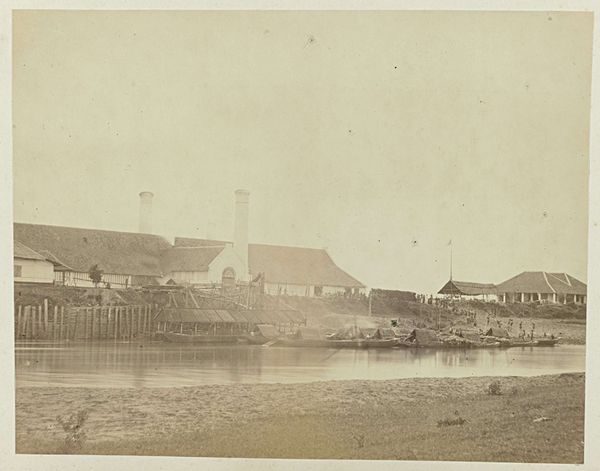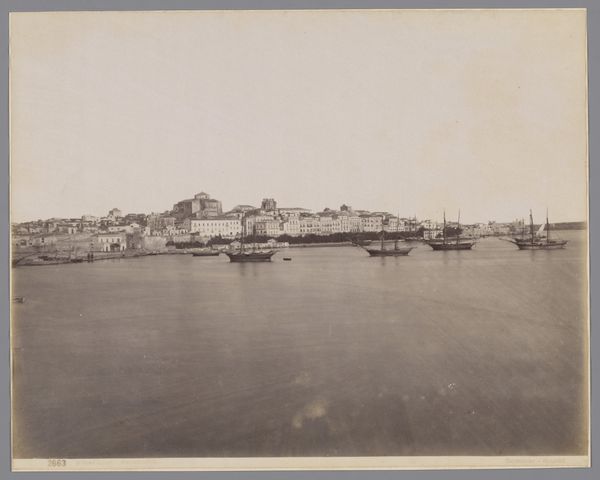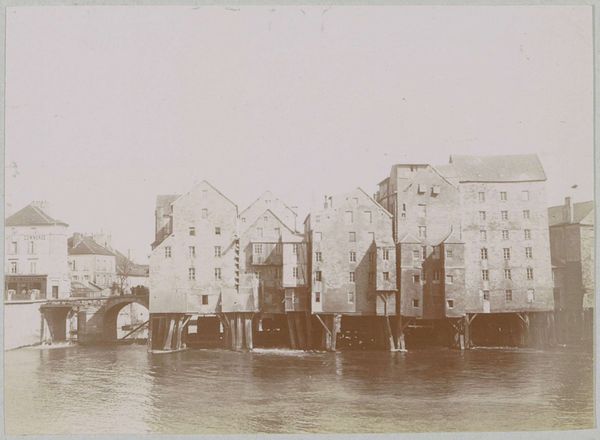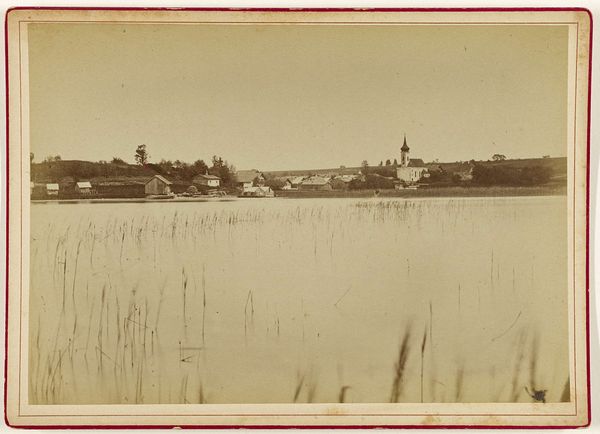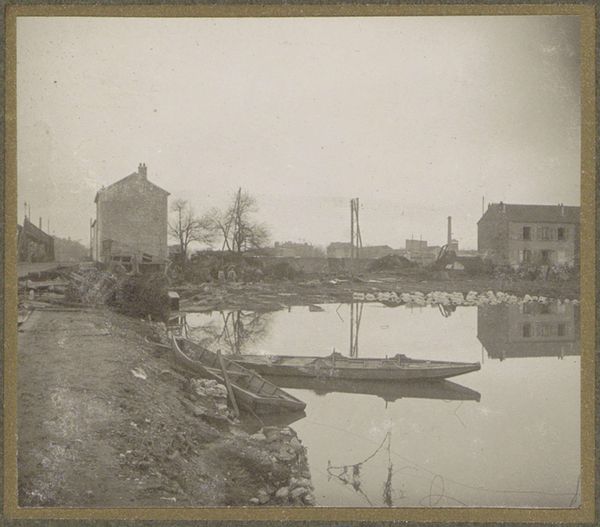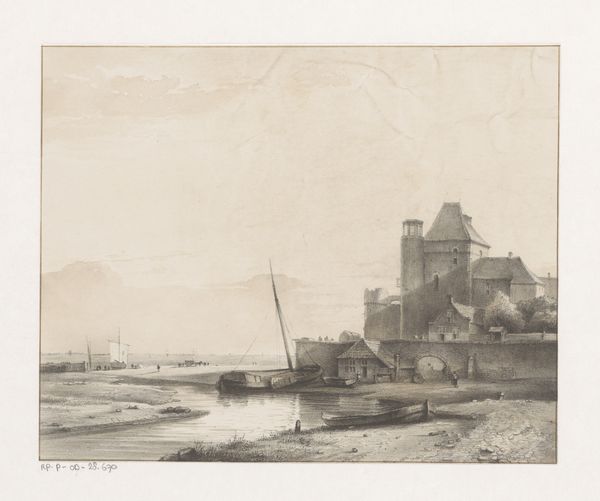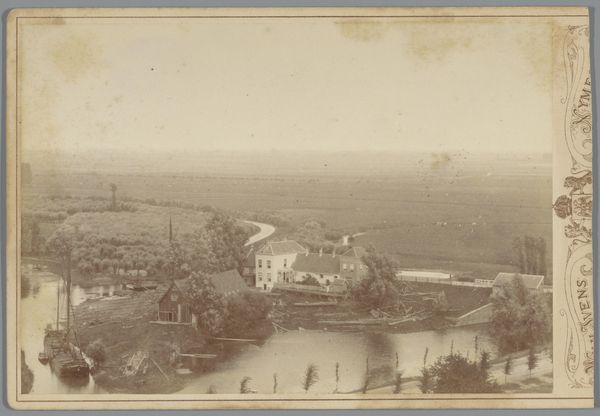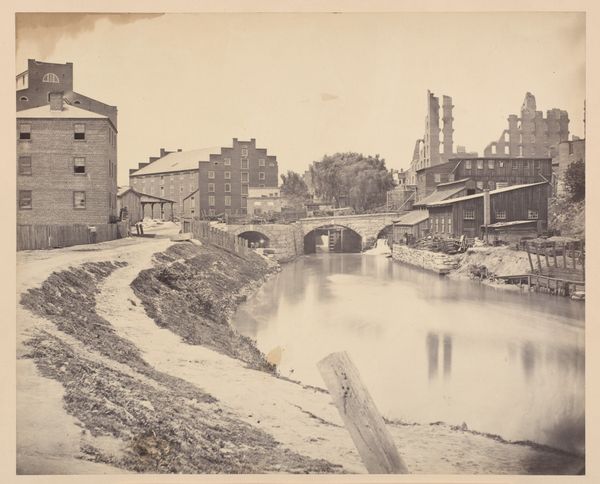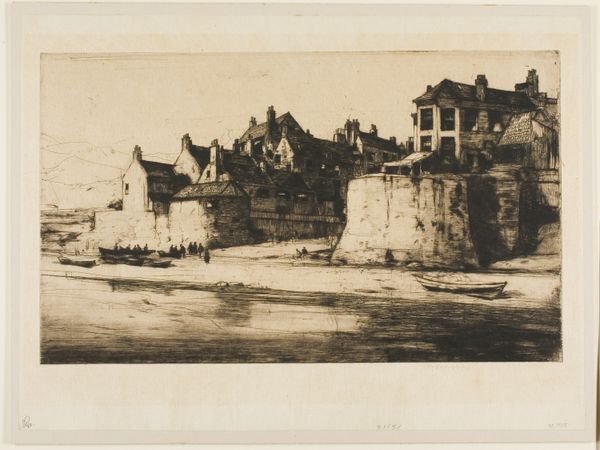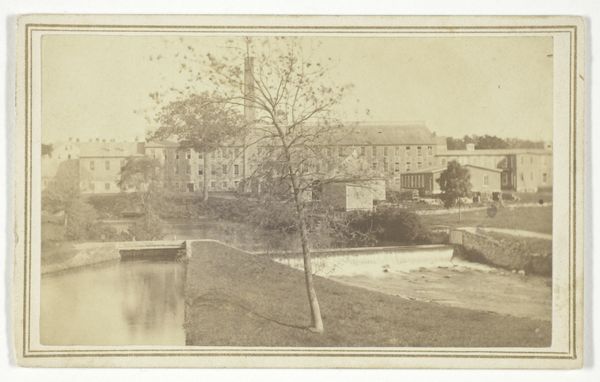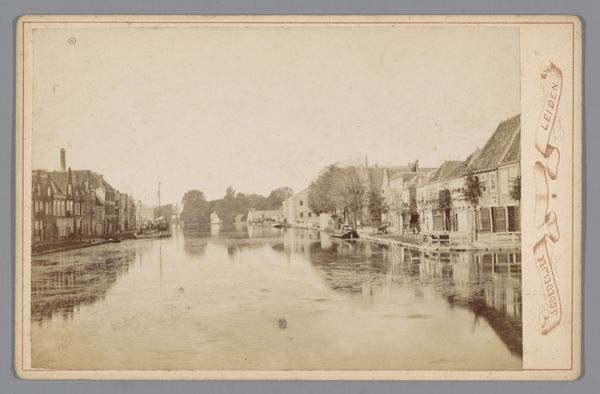
Gezicht op de Oranje-Nassau-kazerne in Amsterdam gezien vanaf de garancinefabriek c. 1852 - 1854
0:00
0:00
eduardisaacasser
Rijksmuseum
photography, gelatin-silver-print
#
16_19th-century
#
photo restoration
#
dutch-golden-age
#
landscape
#
historic architecture
#
traditional architecture
#
photography
#
historical photography
#
gelatin-silver-print
#
19th century
#
cityscape
#
historical building
Dimensions: height 104 mm, width 197 mm
Copyright: Rijks Museum: Open Domain
Curator: This gelatin silver print, dating from about 1852-1854, is entitled "Gezicht op de Oranje-Nassau-kazerne in Amsterdam gezien vanaf de garancinefabriek," or "View of the Orange-Nassau Barracks in Amsterdam from the garancine factory," by Eduard Isaac Asser. It's quite remarkable for its early photographic treatment of the urban landscape, isn't it? Editor: It strikes me as profoundly still, almost desolate. The monochrome palette contributes, of course, but it's the geometric precision, those rigid lines of the barracks mirrored in the water... it speaks to a sense of order, or perhaps imposed order. Curator: Precisely! Asser’s process here is key. Early photography demanded long exposure times, which accounts for the still water and contributes to the almost hyper-real clarity in the buildings. Consider the garancine factory's role; it provided the chemical base—alizarin, derived from madder root—for red dyes used in textiles. These dyes would've been essential to clothing the burgeoning population, even soldiers in the barracks, thus depicting interlocked systems of production and living in the developing city. Editor: Yes, but aesthetically, that barracks looms, almost suffocating the frame. The textural interplay of the rough-hewn lumber in the foreground versus the rigid geometry of the building provides such striking contrast. Also, notice how Asser guides our gaze – that subtle blurring around the edges concentrates attention right where he wants it. Curator: It is intriguing how these new barracks contrast to an adjacent older structure that would be related to production. Here we see a literal before-and-after playing out; industrial growth coupled with a militaristic one is becoming normalized as progress in society. These materials – silver halides suspended in gelatin – literally embody this historical transition, enabling us to visualize Amsterdam’s shift from manufacture to centralized authority. Editor: The scale feels deliberate, not just to showcase architectural detail, but perhaps even to emphasize the sheer mass and repetitive form that almost prefigures minimalist aesthetics. I am reminded of some stark landscapes and structural images by Bernd and Hilla Becher. Curator: Perhaps this gelatin silver print becomes almost sculptural? By immortalizing an environment facing transformation by both market pressures and labor strategies, it prompts contemplation. Editor: I appreciate that shift in perspective. The interplay of structure and reflection...it transforms into an engaging conversation long after the photographic process is done.
Comments
No comments
Be the first to comment and join the conversation on the ultimate creative platform.
